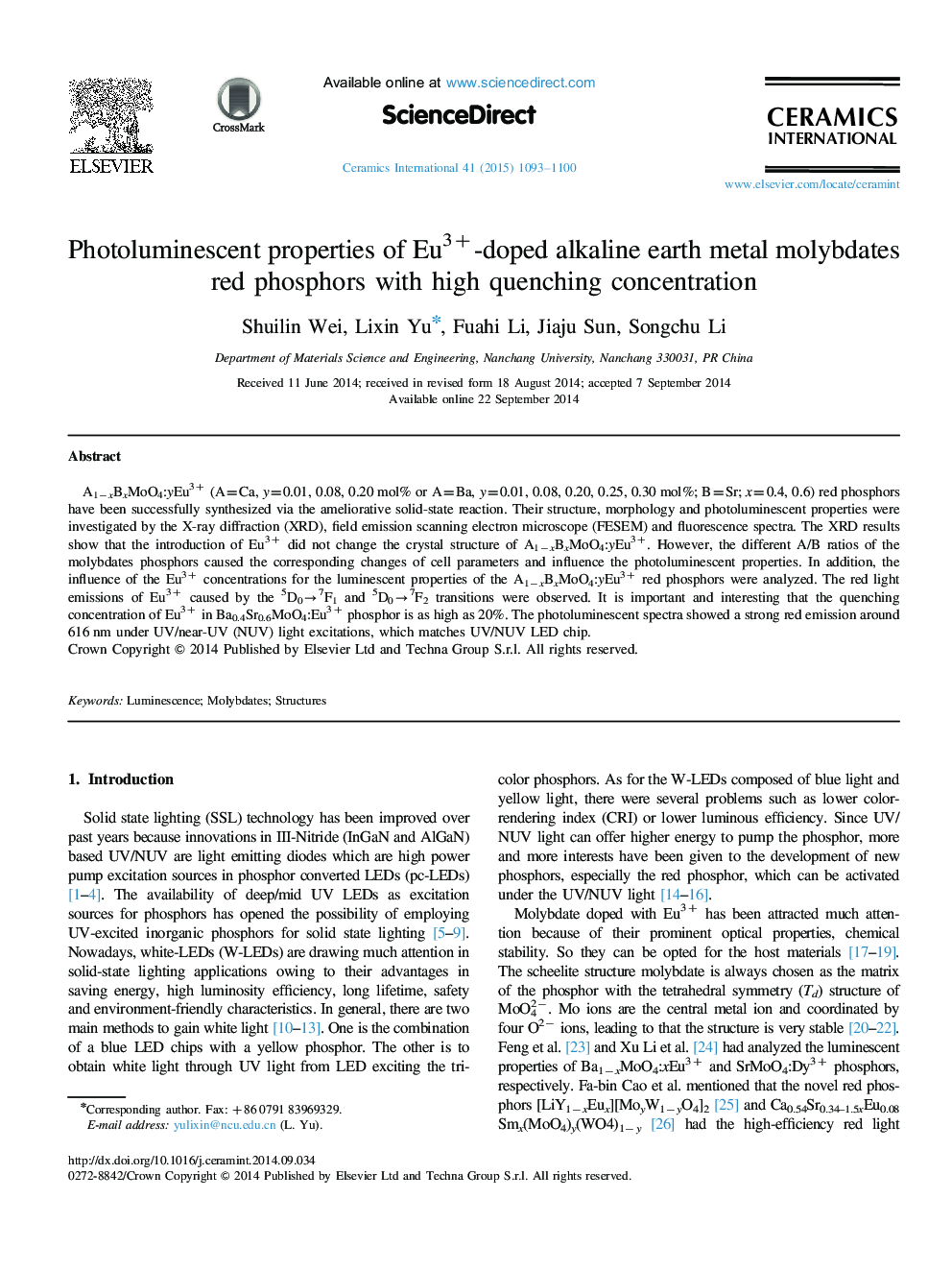| Article ID | Journal | Published Year | Pages | File Type |
|---|---|---|---|---|
| 1460804 | Ceramics International | 2015 | 8 Pages |
A1−xBxMoO4:yEu3+ (A=Ca, y=0.01, 0.08, 0.20 mol% or A=Ba, y=0.01, 0.08, 0.20, 0.25, 0.30 mol%; B=Sr; x=0.4, 0.6) red phosphors have been successfully synthesized via the ameliorative solid-state reaction. Their structure, morphology and photoluminescent properties were investigated by the X-ray diffraction (XRD), field emission scanning electron microscope (FESEM) and fluorescence spectra. The XRD results show that the introduction of Eu3+ did not change the crystal structure of A1−xBxMoO4:yEu3+. However, the different A/B ratios of the molybdates phosphors caused the corresponding changes of cell parameters and influence the photoluminescent properties. In addition, the influence of the Eu3+ concentrations for the luminescent properties of the A1−xBxMoO4:yEu3+ red phosphors were analyzed. The red light emissions of Eu3+ caused by the 5D0→7F1 and 5D0→7F2 transitions were observed. It is important and interesting that the quenching concentration of Eu3+ in Ba0.4Sr0.6MoO4:Eu3+ phosphor is as high as 20%. The photoluminescent spectra showed a strong red emission around 616 nm under UV/near-UV (NUV) light excitations, which matches UV/NUV LED chip.
